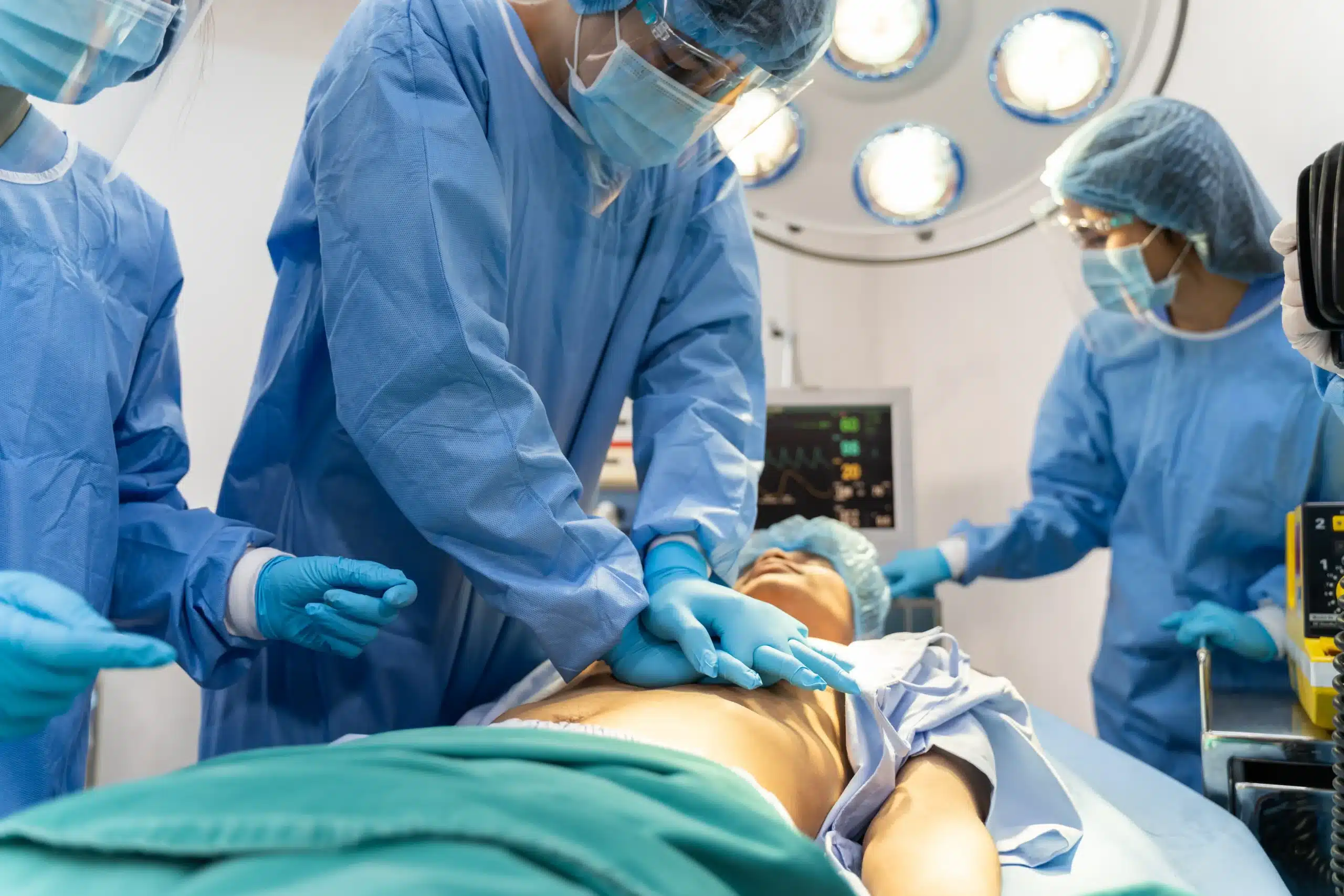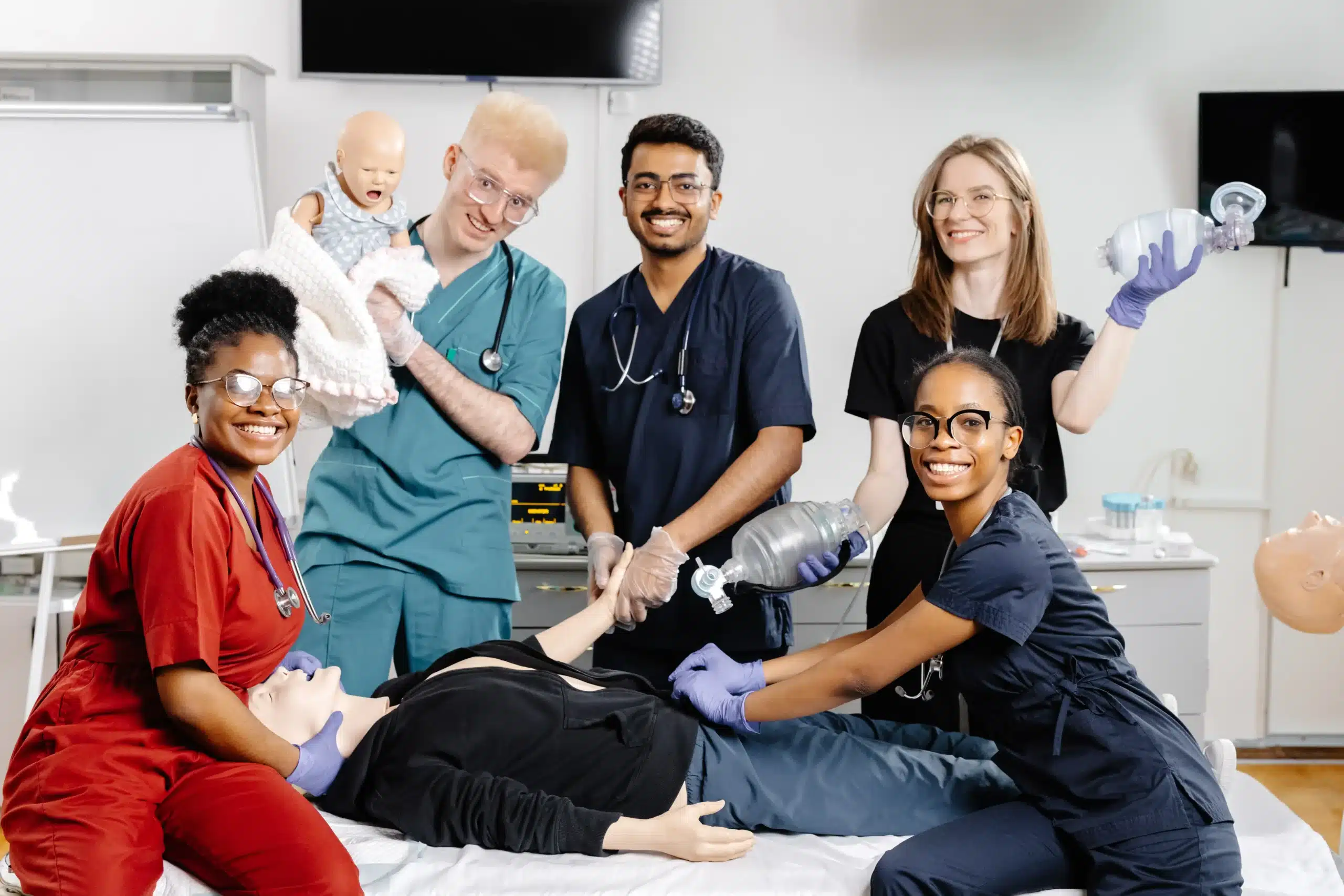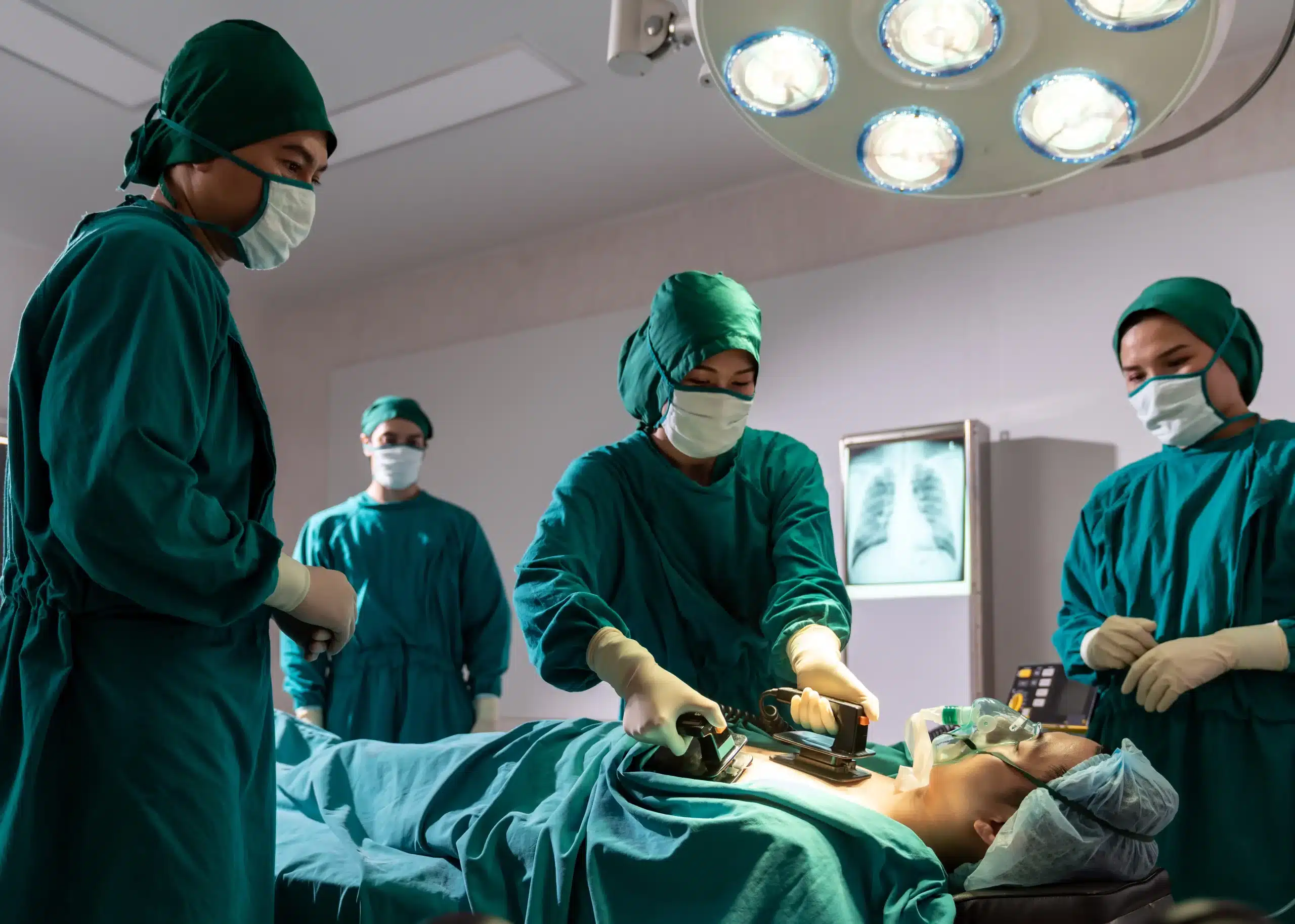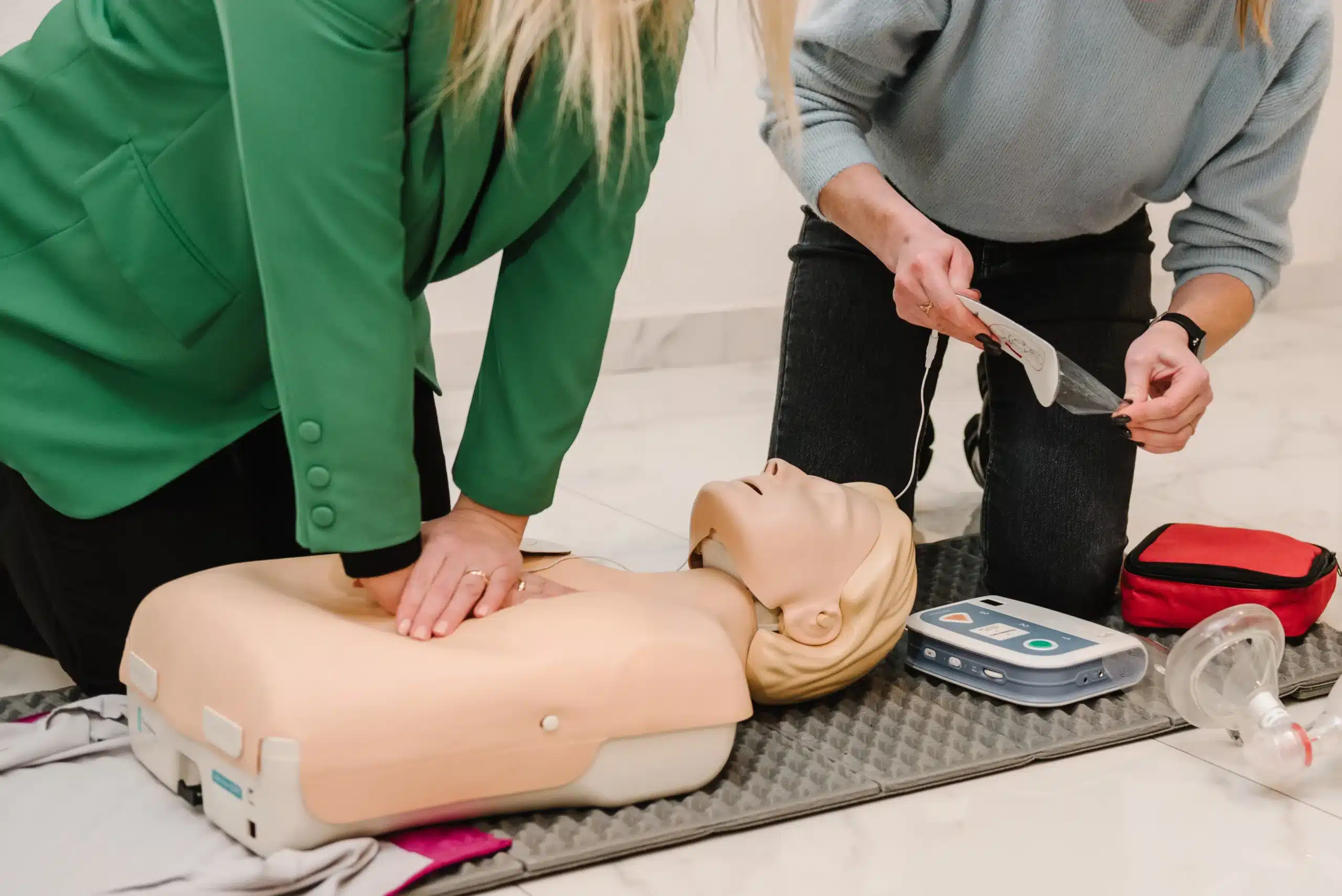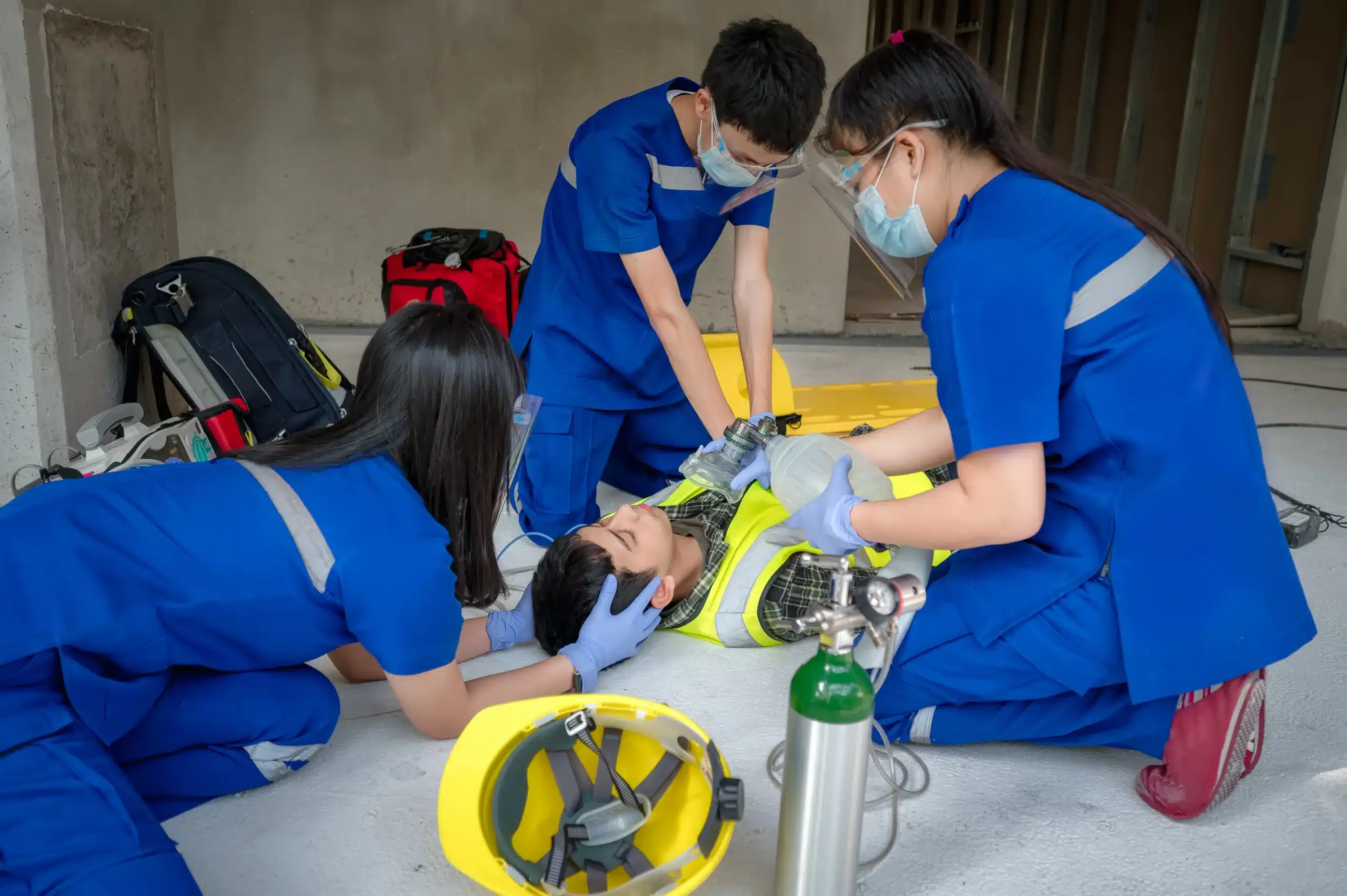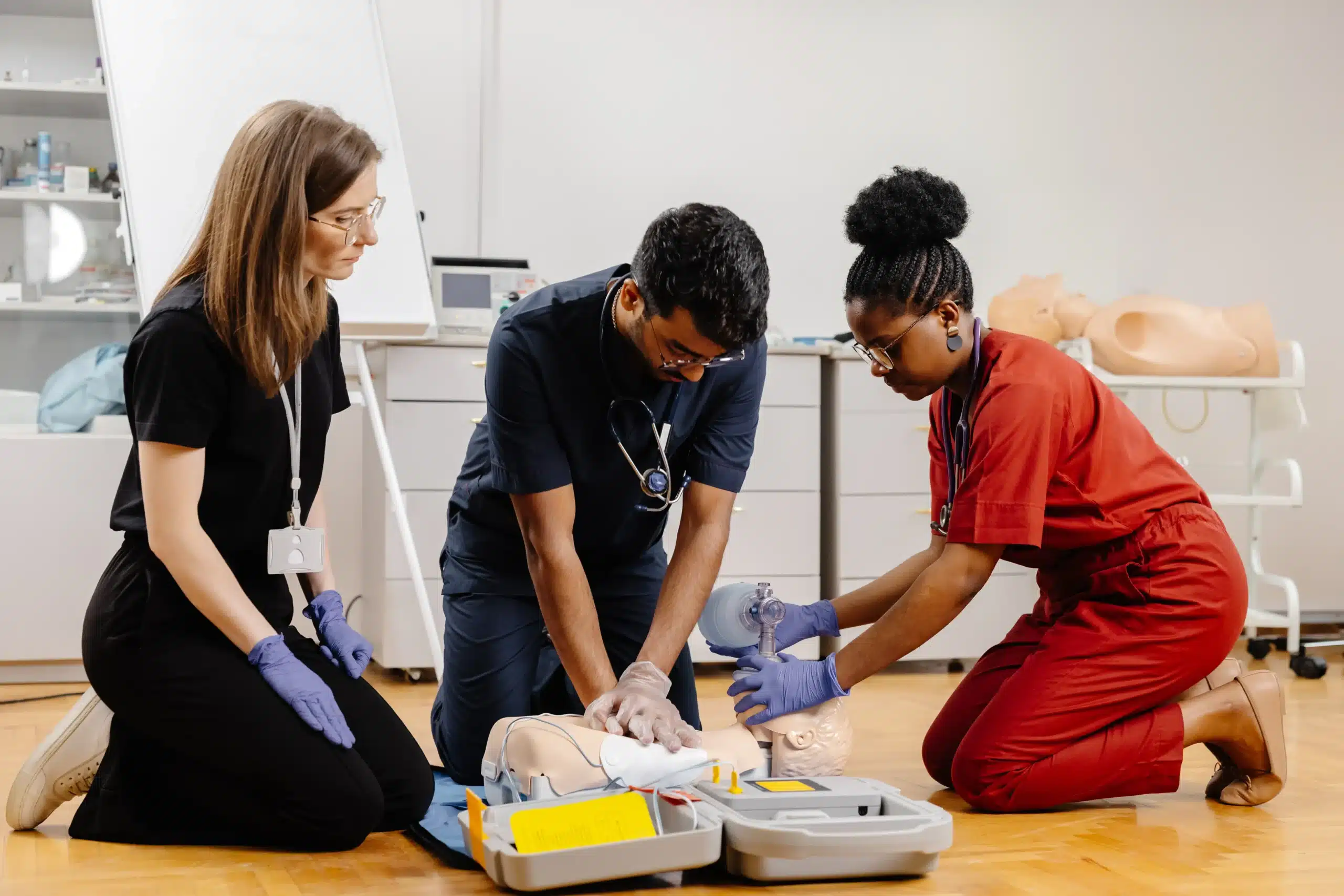Emergencies happen. It’s a fact of life. But what if you could be the one who steps up, the one with the skills to make a difference when every second counts? That’s the power of BLS training. Basic Life Support equips you with the tools to handle medical crises, from performing CPR and using an AED to managing airways and providing essential first aid. This guide breaks down the essentials of BLS, including how to find “bls training near me,” the different types of courses available, and what to expect during your training. Let’s take the uncertainty out of emergencies and empower ourselves to act with confidence.
Key Takeaways
- BLS is a life skill: These skills empower you to respond effectively in emergencies, regardless of your healthcare background. Be prepared to make a difference.
- Choose your training wisely: Select an accredited provider with qualified instructors who offer comprehensive content and hands-on practice. Consider cost and format to fit your needs.
- Maintain your skills: Regular practice and renewal are essential for retaining life-saving knowledge. Review course materials, practice your skills, and stay current with guidelines to provide the best possible care.
What is BLS Training?
BLS training gives you essential, life-saving skills. From CPR and using an AED to managing someone’s airway, BLS equips you to handle medical emergencies. It doesn’t matter if you’re a healthcare professional or not—these skills are valuable for everyone. For those seeking training, our guide on finding BLS training offers helpful resources.
What Does Basic Life Support Mean? Why is it Important?
BLS stands for Basic Life Support. It’s a crucial course for anyone in healthcare, or anyone who might need to respond to a medical emergency. Think of it as the foundation for handling crises like heart attacks, strokes, or near-drowning incidents. BLS training teaches you the algorithms healthcare providers use in these situations. These established procedures help ensure patients receive effective care.
Who Needs BLS Certification?
BLS certification takes you a step beyond basic CPR. It gives healthcare professionals—doctors, nurses, EMTs, and others—the skills to manage airways, use an AED, and work as a team in high-pressure situations. BLS certification is often required for healthcare jobs and provides a deeper understanding of emergency response. Even if you’re not in healthcare, having this certification can make you a valuable asset in your community.
Common BLS Training Myths
There are a lot of misconceptions about BLS training. Some people think it’s only for doctors and nurses, or that it’s too time-consuming. Others believe that CPR training is enough. And then there’s the myth that online BLS certification isn’t as good as in-person training. Finally, some think BLS certification is a one-time thing. Let’s address these myths: BLS training is valuable for anyone who wants to be prepared for an emergency, it can fit into busy schedules, and online options can be just as effective as in-person classes. Staying up-to-date with the latest guidelines is important for providing the best possible care.
Find BLS Training Near You
Once you’ve decided BLS training is for you, your next step is finding a course. There are several ways to locate BLS training, from checking local resources to searching online.
Local Training Centers and Organizations
Start by exploring options close to home. Hospitals, community centers, and fire departments often host BLS training courses. Check their websites or give them a call to see what’s available. You can also contact your local American Heart Association or American Red Cross chapter for information on classes in your area. For those in and around Antioch, Brentwood, and Concord, Safety Training Seminars offers convenient options.
Online Search Tools and Directories
Broaden your search using online resources. The American Heart Association and American Red Cross both have websites with class locators. You can also find various CPR and BLS training providers through a quick Google search. For a comprehensive list of CPR resources in Northern California, take a look at our Northern CA CPR Directory.
Choosing a Training Location: Factors to Consider
When selecting a BLS provider, consider a few key factors. Think about whether you prefer an online, in-person, or blended learning format. Compare costs and research the training center’s reputation. Read reviews and see what other students say about their experiences. For those local to Brentwood, CA, Safety Training Seminars offers a comprehensive range of American Heart Association (AHA) courses, including BLS certification. We pride ourselves on our low price guarantee and convenient Brentwood location.
Popular BLS Training Providers
Here are some well-known organizations that offer BLS training:
American Heart Association
The American Heart Association sets the standard for high-quality CPR education. Safety Training Seminars offers AHA-certified courses throughout Northern California.
American Red Cross
The American Red Cross offers widely recognized BLS training programs in various course formats, including in-person and blended learning options.
National Safety Council
The National Safety Council provides BLS training courses designed for healthcare professionals and other individuals who require certification.
American Safety & Health Institute (ASHI)
ASHI offers BLS training that covers essential life-saving skills, including CPR, AED use, and basic first aid.
ProTrainings
ProTrainings offers online BLS certification courses, providing a flexible option for busy professionals.
Safety Training Seminars
Safety Training Seminars offers a range of AHA courses, including BLS certification, equipping you to handle medical emergencies confidently. We focus on providing practical skills and knowledge to help you respond effectively in critical situations.
BLS Training: Formats and Costs
In-Person, Online, or Blended Learning: What’s the Difference?
BLS training equips you with life-saving skills, from CPR and using an AED to managing airways. Whether you’re a healthcare professional or not, BLS training gives you the confidence to handle medical emergencies. Safety Training Seminars offers a range of American Heart Association (AHA) courses, including BLS certification, in several formats. In-person BLS classes provide hands-on practice and direct interaction with instructors. For those who prefer flexibility, online BLS courses offer self-paced learning. A blended learning approach, like HeartCode BLS, combines online coursework with an in-person skills session. This hybrid model lets you learn the theory at your own pace and then practice your skills with expert guidance. Regardless of the format, completing the required components earns you an AHA BLS Provider certification card.
Typical Costs and What They Include
BLS training costs vary based on the format, provider, and location. In-person classes often include instruction, course materials, and certification fees. Online courses may offer a lower price point, but double-check that the cost covers the online modules, exam, and certification processing. Blended learning programs typically combine the cost of the online portion with a separate fee for the in-person skills session. Comparing prices from different providers helps you find the best value. Look for courses that offer comprehensive resources and support to help you succeed. ACLS.com’s online BLS certification course includes interactive components, practice tests, and a certification exam.
Discounts, Group Rates, and Promotions
When choosing a BLS provider, consider factors like course format (online, in-person, or blended), cost, and the training center’s reputation. Many training centers offer discounts for group registrations, a great option for workplaces or community groups. Some providers also offer discounts for students, military personnel, or first responders. Check with your chosen provider about ongoing promotions or discounts. Safety Training Seminars offers group discounts, making training more affordable for organizations. It’s always wise to ask about potential cost savings before registering.
Choose the Right BLS Training Provider
Finding the right BLS training provider is crucial for a high-quality learning experience and a recognized certification. Here’s what to consider:
Accreditation and Certification Validity
First, confirm the training center’s accreditation and the certification’s validity. Reputable providers, like Safety Training Seminars, offering AHA-compliant courses, receive accreditation from recognized organizations, ensuring the training meets established standards. Verify the certification is accepted by employers and licensing bodies in your profession. Safety Training Seminars provides certification cards upon completion.
Instructor Qualifications and Experience
Instructors’ qualifications and experience matter. Certified instructors with real-world experience in emergency medical services bring valuable practical knowledge, enriching your learning and preparing you for real-life emergencies.
Course Content and Hands-On Practice
Effective BLS training covers essential life-saving skills, including CPR, AED use, and airway management. Hands-on practice is key for building confidence and competence. Choose a course with ample opportunities to practice these skills in a simulated environment. Safety Training Seminars prioritizes hands-on learning for practical skill development.
Reviews and Recommendations
Online reviews and testimonials from past students offer insights into a training provider’s quality. Recommendations from colleagues or healthcare professionals are also valuable. Word-of-mouth referrals often provide a clear picture of the learning experience and the training’s overall value. You can find reviews and recommendations for Safety Training Seminars online.
Prepare for Your BLS Training
Getting ready for your BLS training? Great! Knowing what to expect can make the whole experience smoother and more effective. This section covers the course content, tips for skill retention, and how you’ll get certified.
What to Expect During the Course
BLS training covers core life-saving skills, from CPR and using an AED to managing someone’s airway. You’ll learn how to respond to medical emergencies, whether you work in healthcare or not. The training goes beyond basic CPR for healthcare professionals, covering team dynamics and advanced airway techniques. Expect a combination of interactive lectures, demonstrations, and hands-on practice. You’ll work with training manikins to simulate real-life scenarios, giving you the confidence to act quickly and effectively under pressure. Find BLS Training Near You.
Tips for Success and Skill Retention
Your BLS training is an investment in your ability to help others. To make the most of it, come prepared to actively participate and ask questions. Taking notes and reviewing the material soon after class will help solidify what you’ve learned. Regular practice is key for any skill, especially life-saving ones. Consider refresher courses and find opportunities to practice with friends or family. Immediate response in emergencies can drastically improve outcomes, so staying sharp is crucial. Leverage technology like training apps and online resources to keep your skills fresh between courses. Learn more about BLS training.
Certification Process and Renewal Requirements
After successfully completing your BLS training, you’ll receive a certification card. This card demonstrates that you’ve met the requirements of the course and are qualified to provide BLS. BLS certification courses include comprehensive AED training, a critical component of emergency care. Remember that BLS certifications typically expire after a certain period, usually around two years. Make sure you understand the renewal requirements and plan to recertify before your current certification lapses. Staying current with your BLS training ensures you’re always ready to provide the best possible care in an emergency. Read about BLS for Healthcare Providers. Understand the benefits of BLS training.
Related Articles
- BLS ACLS PALS Training: Your Ultimate Guide – Brentwood CPR Classes
- Find BLS Classes in Brentwood: Your Complete Guide – Brentwood CPR Classes
- BLS Certification in Concord: Your Comprehensive Guide – Brentwood CPR Classes
- BLS for Healthcare Providers in Brentwood: A Complete Guide – Brentwood CPR Classes
- CPR Myths Debunked for Effective Life-Saving Skills
Frequently Asked Questions
Is BLS certification the same as CPR certification? BLS certification builds upon basic CPR skills. It includes CPR but also covers other essential life-saving techniques like AED use and airway management. It also often involves a more in-depth understanding of emergency response procedures, especially for healthcare providers. So, while CPR is a part of BLS, BLS certification provides a broader skillset.
How often do I need to renew my BLS certification? BLS certifications typically expire every two years. Check with your certifying organization (like the American Heart Association or American Red Cross) for their specific renewal requirements. It’s always a good idea to mark your calendar or set reminders so you don’t let your certification lapse.
What if I don’t work in healthcare? Is BLS training still relevant for me? Absolutely! While BLS is often a requirement for healthcare professionals, anyone can benefit from having these skills. Knowing how to respond to medical emergencies like heart attacks, choking incidents, or near-drowning situations can make a real difference in someone’s life, even outside of a hospital setting.
Are online BLS courses as good as in-person classes? Online BLS courses can be just as effective as in-person classes, especially if they include a hands-on skills session component. A good online course will cover the same material, provide interactive learning experiences, and prepare you for the in-person skills check and certification exam. The key is to choose a reputable provider that offers high-quality online training.
How can I find BLS training near me? Start by checking with local hospitals, community centers, and fire departments. You can also search online using resources like the American Heart Association and American Red Cross websites, which often have class locators. Don’t forget to ask friends, family, or colleagues for recommendations as well.


